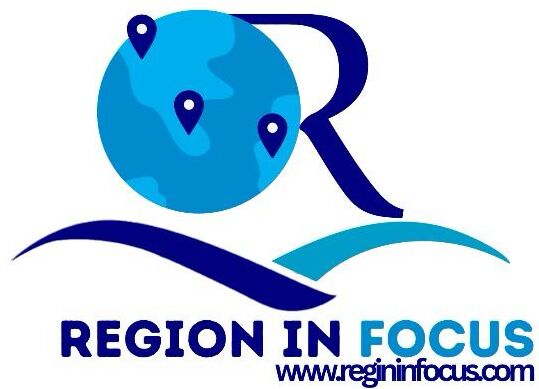Introduction
Elections are the fundamental pillar of democracy, but they are becoming susceptible to a different form of threat, that of organized disinformation. Misinformation or fake news aimed at influencing the masses is now a key strategy used by the actors to influence the election results, weaken the credibility of the institutions, and divide the societies. Compared to the old-fashioned method of propaganda, the contemporary disinformation is reinforced by the social media algorithms and artificial intelligence and networks of the fake accounts, giving it the unmatched scope and speed. It is vital to comprehend how such campaigns work and the impact they have on electoral integrity to continue to have democratic legitimacy in the digital era.
The Logistics of Propaganda Crusades.
The campaigns of disinformation are not similar to the common political persuasion campaigns in the sense that they include the intentional use of lies, misleading methods and a hidden exaggeration. They can consist of fake news, photo-editing, deep fake videos, or manipulated data published at the appropriate time to impact the minds of the population. These campaigns can be fact and fiction, which can make the stories more realistic, they often trade on emotional or identity-based concerns, immigration, religion, security, and use them to mobilize or demobilize voters.
The effect is enhanced by the architecture of contemporary information systems. The social media sites encourage interaction, i.e., sensational or inflammatory information propagates faster than verified information. Robots, troll farms, micro targeting advertising can also further corrupt the online information landscape by building echo chambers that cement existing prejudices. This ecosystem allows domestic and foreign parties to tamper with elections at a lower and less noticeable cost than they would have done in conventional methods.
Domestic and Foreign Actors
The practice of disinformation during the election process does not only belong to enemy nations. The local political forces are also employing comparable strategies, and the distinction between a normal campaign and a manipulation process is becoming thin. In other instances, local consultants operate organized networks of fake accounts to drive positive messages or attack rivals. There is, however, an extra layer of complexity with foreign actors. Sponsored activities: those claimed to have been perpetrated by Russia in the 2016 American elections or which might have occurred in European referendums are often not interested in getting specific candidates elected but rather in undermining democracy itself.
Such a duality implies that there should be policy interventions that target both external and internal sources of disinformation. The problem with measures that focus on foreign interference only is that they may overlook domestic based campaigns, whereas those that focus on domestic regulation only may expose democracies to foreign manipulation.
Influence on Electoral Integrity.
The final danger of disinformation campaigns does not lie only in the fact that voters can believe in false information but also they may no longer trust elections as honest mediators in the political arena. False stories of voter fraud, stolen elections, and unfair officials can be used to legitimize even properly conducted elections when they get hold. This loss of confidence has the power to demoralize citizens to vote, create protests, or justify anti-democratic actions.
The policy debate can also be biased by disinformation. False or misleading statements concerning candidates, parties or issues are misleading to voters and they inhibit their capacity to make informed decisions. Even minor opinion changes that are motivated by disinformation can change the results in close contested elections. The end-term consequence is the undermined democratic culture in which facts are of secondary importance to virality and suspicion is assigned as the new norm.
Difficulties of Regulation and Responsibility on the Platform.
Combating the problem of disinformation in elections creates challenging balances between security and the freedom of expression. Excessive censorship by the government will have the danger of suppressing one, and it can also be used by people in power to shut down critics. On the other hand, when the information space is completely unchecked, it gives malign actors space to work and take advantage of the weaknesses without interference.
This dilemma is at the center of social media sites. They have implemented content moderation policies, fact-checking partnerships, and ad transparency tools to limit disinformation but they are not evenly enforced. Engagement driving algorithms continue to give preference to sensational content, and platforms operate globally, so it is difficult to implement interventions targeted at particular electoral situations without being accused of bias or excess.
Policy Responses and Good Practices.
A number of solutions have been developed in enhancing electoral integrity in curbing disinformation. Enhancing digital literacy of citizens is a way of vaccinating against fake news because it enhances the skills of citizens in assessing sources. Mandating more political advertising and financing can reveal the underhanded influence activities. Platforms can collaborate closely with electoral commissions to fact-check and take down fake information regarding the voting process. The democracies can cooperate internationally to be able to share information about the emerging threats in a rapid manner.
After all, though, technical and regulatory solutions should be supplemented with larger-scale work to restore confidence in institutions and media. Independent journalism, open government and fair electoral administration limit the fertile soil where disinformation propagate. In communities where citizens feel represented and enlightened, the narratives used to manipulate people can have less grounds?
Looking Ahead
With the development of artificial intelligence, the problem of disinformation will become even more dangerous. The software to produce hyper-realistic fake videos, voices and texts reduces the expenses and increases the quality of manufactured content. Micro targeting and behavioral profile will allow even more accurate manipulation of segmented voters. The next several years could be characterized by the arms race between the methods of disinformation and the technologies of their detection.
Mitigating the problem of electoral integrity in this environment will need a whole of society solution- governments, platforms, civil society and even voters themselves all will have a role to play. Transparency of campaigns, effective surveillance of foreign influences, media literacy investment, and strong democratic institutions are independent of each other. It is not only personal politics but the honor of democracy that is at stake.
Conclusion
Disinformation is not something that cropped up accidentally but a systemic risk of electoral integrity. They take advantage of the transparency of the democratic societies, velocity of digital communications, and vulnerabilities of the information ecosystems. Fighting them requires a delicate equilibrium: defending the freedom of speech and combating intentional misinformation, using technology without sacrificing the rights, and acting in a concerted effort across borders without interfering with national independence. It is only through tackling these issues headlong that democracies are going to be able to make sure that the elections are not just the politics of ideas but spectacles of misinformation that are being played with.


